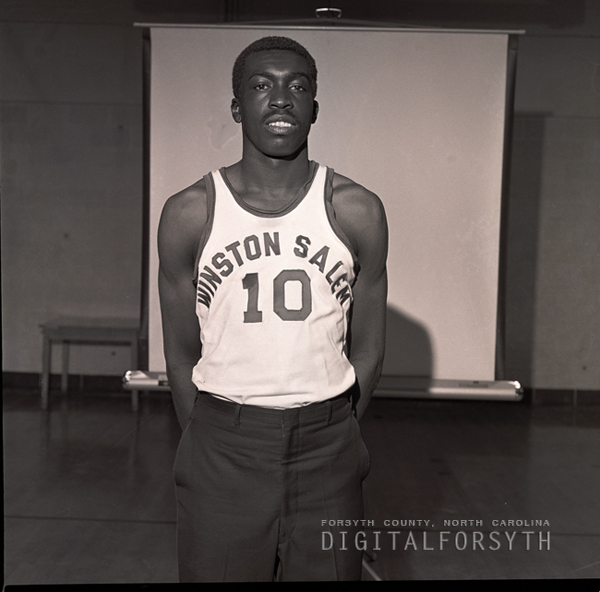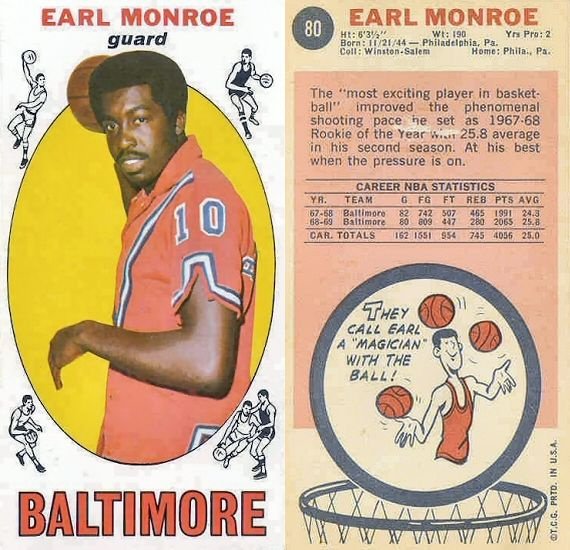
HBCU Athlete Profile: Earl “The Pearl” Monroe, Winston-Salem State University
On this edition of HBCU Athlete Profile, we highlight NBA legend Earl “The Pearl” Monroe a combo guard (can play either point guard or shooting guard) who played for the
On this edition of HBCU Athlete Profile, we highlight NBA legend Earl “The Pearl” Monroe a combo guard (can play either point guard or shooting guard) who played for the Rams of Winston-Salem State University from 1963-1967.
After a solid freshman season where he averaged just 7.1 points per game, Monroe wanted to leave college and return to his hometown of Philadelphia, Pennsylvania until his head coach and CIAA Hall of Famer Clarence Gaines called his mom and they convinced him to remain in college.
The following season, Monroe showed great improvement averaging 23.2 points in his sophomore season and 29.8 points in his junior season.
"The supportive atmosphere found at HBCUs allows #students to excel without the racial pressures that exist outside the classroom. You develop lifelong friendships and a sense of belonging. That’s what I took away from Winston-Salem State." -Earl Monroe https://t.co/kVJpmq9E9E pic.twitter.com/OqbWLqu8i1
— Andscape (@andscape) November 27, 2018
It was in his junior season that Monroe led the Rams to a CIAA championship and won tournament’s Most Outstanding Player award. Winston-Salem would clinch berth in the Division II Basketball tournament but would lose in the first round.
In his senior season, Monroe averaged 41.5 points per game scoring 1,329 total points setting a Division II record for points scored in a season and was named a Division II All-American.
He would lead Winston-Salem State to the NCAA Division II tournament championship game where they beat Missouri State 77-74. He was named the Division II tournament Most Outstanding Player and a member of the Division II tournament.
March 17, 1967 @WSSU_Athletics became the first HBCU to win an NCAA basketball title. Earl Monroe averaged 41.5 ppg on the 31-1 squad. #HBCU #WSSU pic.twitter.com/M8y0MEXexf
— HBCU Gameday (@HBCUGameday) March 17, 2019
Earl Monroe ended his college career with a scoring average of 26.7 points per game and 2,395 total points making him the all-time leading scorer in CIAA history.
In 1977, Monroe was named to the CIAA Hall of Fame and was named to the inaugural College Basketball Hall of Fame Class in 2006. In 2017, Winston-Salem retired Monroe’s jersey number.
Earl Monroe would transition to the NBA where he was selected number two overall by the Baltimore Bullets (now Washington Wizards) in the 1967 NBA Draft. To date, this makes him the highest drafted player out of an HBCU. He would then go on to win Rookie of the Year and was named to the All-Rookie team after averaging 24.3 points, 5.7 rebounds and 4.3 assists.

Monroe would go on to spend four full seasons with the Bullets averaging 23.7 points, 4.6 assists, and 3.7 rebounds while also appearing in the team’s first ever NBA Finals in 1971.
From there, Monroe would be traded to the New York Knicks where he would play the remaining nine seasons of his career. With the Knicks he would appear in two NBA Finals winning an NBA championship in 1973. In his time with the Knicks, he averaged 16.2 points, 3.5 assists and 2.6 rebounds.
At the end of his NBA career, Earl Monroe had appeared in four NBA All-Star games and an All-NBA team with career averages of 18.8 points, 3.9 assists and 3.0 assists.
In 1990, Earl Monroe was named to the Naismith Basketball Hall of Fame and was named one of the NBA’s Top 50 Greatest Players in 1996. His jersey would be retired by both the Knicks and Wizards first by the Knicks in 1986 then by the Wizards in 2007.
1️⃣5️⃣ // Earl Monroe
– 18.8 PPG | 3.0 RPG | 3.9 APG
– NBA Champion (1973)
– 4-Time All-Star pic.twitter.com/Axzgz0IITf— NEW YORK KNICKS (@nyknicks) April 14, 2020
Stay tuned into TheDMVDaily for the next HBCU Athlete Profile.

